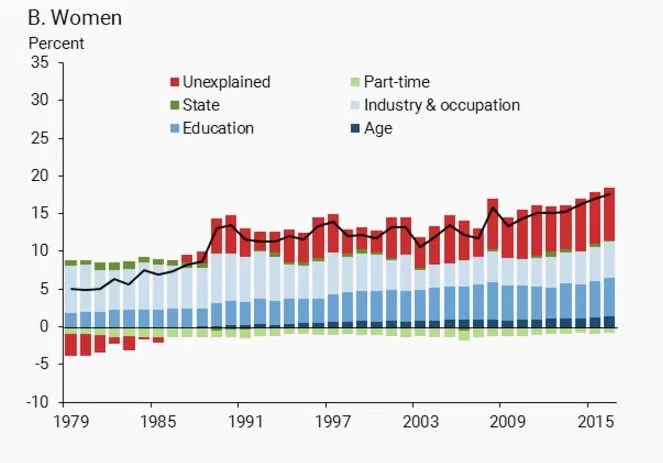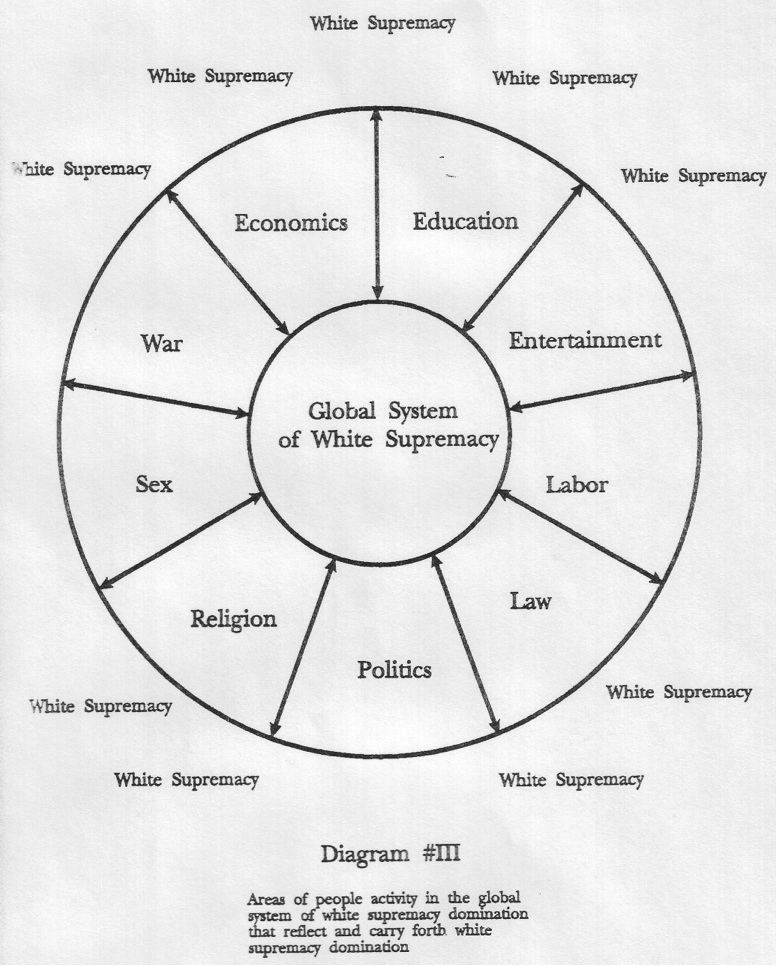53 yrs after the Civil Rights Act Outlawed Discrimination the Gap in Wages btw Blacks & Whites Continues to Grow
/
[Laws are not power. Laws do not protect us. How gullible are we to believe that "legislation" created & funded by racist suspect white legislators, administered/enforced by white prosecutors & Gov workers and "remedied" by white judges and jurors would actually produce justice for Black people?] [MORE]
From [HERE] The gap in employment and earnings between black and white workers in the US is nothing new. Still, 53 years after the Civil Rights Act outlawed discrimination, research from the Federal Reserve Bank of San Francisco shows that the gap in wages between races has widened in recent years.
The research also highlights a particularly concerning aspect of this: the increase in the wage gap between black and white workers is also becoming more difficult to explain. That’s to say that the disparity in earnings that cannot be tied to location, education, working hours, job type, or age, is increasing.
In 1979, the average black man in the US earned about 80% of the average white man’s hourly wage. By 2016, the average black man earned just 70% as much. Among women, in 1979 the average black woman earned 95% of the average white woman’s wage, but last year this had fallen to 82%.
If, according to economic theory, wages are a reflection of productivity, this gap should be explained by “observable” factors such as age, education, and job type. Location and part-time work status are also easily measured. Researchers at the San Francisco Fed went further, trying to quantify how much these observable factors explained the gap, instead of harder-to-measure factors, such as institutions, historical pay norms, discrimination, and the public policies like the minimum wage.
In the charts below, the black line plots the earnings gap in each year and the bars separate out the factors causing it. The red bar shows the “unexplained” difference.

While education, industry, and occupation explain most of the difference, the researchers puzzled over a large part of the difference that couldn’t easily be accounted for. In a recently published paper, they write:
Perhaps more troubling is the fact that the growth in this unexplained portion accounts for almost all of the growth in the gaps over time. For example, in 1979 about 8 percentage points of the earnings gap for men was unexplained by readily measurable factors, accounting for over a third of the gap. By 2016, this portion had risen to almost 13 percentage points, just under half of the total earnings gap. A similar pattern holds for black women.
The pattern for women is even more perplexing. The “unexplained” factor suddenly starts to widen the wage gap between black and white women starting in the mid-1980s. It grows rapidly from there.

This research builds on a more in-depth study by the Federal Reserve (pdf) published in June. That paper also found that observable factors were unable to explain the growing wage gap. By comparison, the wage gap between Hispanic and white workers was notably smaller and mostly explained by differing levels of education.
The most important question is, then, how much of this “unexplained” gap between black and white workers is down to discrimination? The short answer: probably most of it. [MORE]

The only thing "perplexing" here is that the racist suspect writer of this article has ommitted the entire context of these wage differences; the system of racism/white supremacy. An answer to this inquiry is what Nelly Fuller describes as the "refinement of racism/white supremacy."












































































































































































































































































